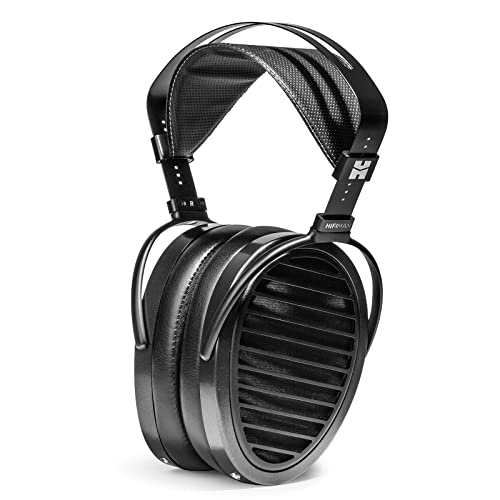Planar Magnetic Vs Dynamic Driver Headphones
Most headphones and IEMs feature a dynamic driver, which uses a cone that moves back and forth to create sound waves. Planar magnetic headphones feature a flat diaphragm. They are more expensive, however they provide a better image and clarity.
They may not be suitable as portable devices since they require more power. The 'punch', or slam, is a result of this. For some audiophiles, they are a step down.
The Basics
Planar Magnetic Drivers are quickly becoming a standard in headphones due to their rich audio and clear sound. While they're not as well-known as dynamic drivers, you can still find big-name companies such as Audeze and Oppo that sell the top Planar Magnetic Headphones. Planar Magnetic Headphones work on a slightly different principle than traditional dynamic driver headphones because they do not use an oscillating voice coil to generate vibrations within the diaphragm. Instead, the charged portion of the driver is spread across the flat surface of the diaphragm, which allows for more uniform movement.
Generally speaking the planar magnetic driver is more efficient in producing sound waves than a dynamic driver due to a simpler mechanism. This could result in better distortion levels, a more accurate response to music's transients, and a more natural soundstage.
There are numerous advantages when you choose headphones with a planar magnet drive. However, you must be aware of some limitations. You should first be aware that these headphones emit more sound than open-back dynamic models. The diaphragm that is flat on planar magnetic headphones will send sound both ways. As a result, sound waves will escape from the ear cups into your surroundings. If you plan to use your headphones in public areas or at work it is something you should consider.
Another issue is that planar magnetic headphones often require more power to achieve their full potential than other types of headphone. The diaphragms are large and thin, and require more energy to move in a uniform manner and are therefore heavier and more bulky. This is a disadvantage if you are looking to keep your headphones lightweight and portable.
Additionally, planar magnetic headphones may not have the slam and punch many listeners like. This is due to the flat diaphragm doesn't vibrate in the same way as traditional headphones and aren't able to be 'plucked,' as some listeners might wish. However, this isn't an unpopular opinion, and there are some premium planar magnetic headphones (like the HiFiMAN Sundara) that are excellent at image distribution and punch.
If you're willing to overlook the shortcomings and are seeking a headphone that has a unique soundstage with unparalleled clarity, planar magnetic headphones may be worth a look. Be sure to consider the extra cost and power requirements, as well as the weight and size of your headphones prior to making a choice. The good news is that there are many excellent planar magnetic headphones available at an affordable price, including the renowned HiFiMAN Sundara. This offers a taste of the speed as well as accuracy and detail that planar magnetic headphones can provide without costing a fortune.
Advantages
Although there are a lot of excellent headphones that utilize dynamic drivers, a lot of the best headphones in a variety of price ranges employ planar magnetic technology. These headphones are usually more expensive than dynamic ones however they offer superior performance. They offer a larger soundstage, and offer a more immersive listening experience.
To produce vibrations within the diaphragm, planar magnetic headphones make use of two or more magnets positioned close to the flat surface of the driver as well as conductor trace on the diaphragm. Electrical impulses flowing through these wires induce magnetic forces that interact with magnets to cause them vibration. planar closed back headphones generated is evenly distributed across the entire surface of the diaphragm. This doesn't cause distortion as dynamic headphones do.

These headphones have a larger soundstage and better transient response than dynamic models. They can also handle audio changes with greater accuracy. They also have a lower resonance as well as a flatter frequency response. This makes them more accurate and richer in bass than dynamic headphones.
Since they're more accurate and precise, they offer a natural and clear sound quality, which attracts audiophiles. This is evident in the clarity of their sound as well as how they reproduce the stereo balance and position of instruments. This is especially true for closed-back models such as the HiFiMAN Sundara that provide a more spacious and realistic soundstage.
They are also less likely to break, which happens when forces acting on the diaphragm degrade the structure of the diaphragm and cause different points to drift out of sync. This can be caused by the design or manufacturing defect. It is one of the reasons why planar headphones are considered the premium alternative.
This kind of headphone has some disadvantages. First, it requires lots of power to run the driver. In turn, they can be heavy and bulky, which can make them less portable than their more powerful counterparts. They also tend to leak more sound, which means that you'll need to be in a quiet space to listen to them without disturbing those around you. Fortunately, the latest models have improved seals and noise isolation to mitigate this issue. This is why it's hard to give an absolute answer to whether or the magnetic headphones that are planar are better than dynamic ones. It's all about what you value and what your priorities are.
